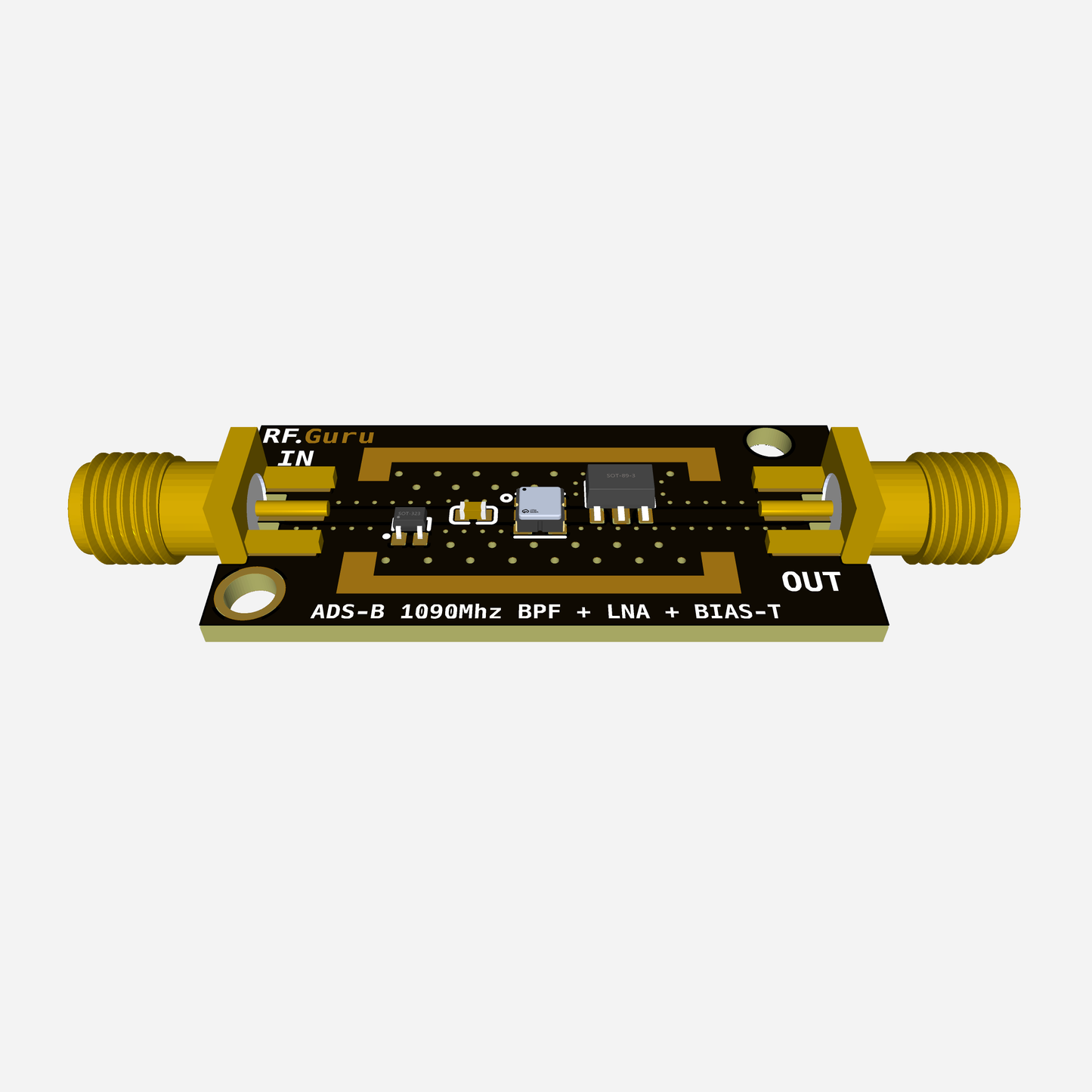1
/
of
1
RF Guru
ESD + BPF + Low Noise Amplifier 1090mHz ADS-B
ESD + BPF + Low Noise Amplifier 1090mHz ADS-B
Regular price
€50,50 EUR
Regular price
Sale price
€50,50 EUR
Unit price
/
per
Tax included.
Couldn't load pickup availability
High-Performance ADS-B 1090 MHz LNA with Band-Pass Filter
Optimized for ADS-B aircraft tracking, this Low Noise Amplifier (LNA) uses the proven PGA-103+ amplifier and a dedicated 1090 MHz SAW filter (MP02892) to maximize reception quality. It combines ultra-low noise, selectivity, and robust output headroom, making it ideal for demanding aviation monitoring setups.
Specs at a Glance
| Parameter | Specification |
|---|---|
| Center Frequency | 1090 MHz (ADS-B) |
| Gain | ~8 dB |
| Noise Figure | ~0.6 dB (typical) |
| Linearity | IP3 > 41 dBm |
| P1dB | 22.5 dBm |
| Front-End Filter | SAW filter MP02892 (1090 MHz BPF) |
| Powering | 5 V / 3 V via Bias-T |
| Protection | Integrated ESD input protection |
Key Features
- Integrated ESD Protection — safeguards against static discharge
- SAW Band-Pass Filtering — MP02892 filter ensures tight 1090 MHz selectivity
- Ultra-Low NF — ~0.6 dB for optimal sensitivity
- High Linearity — IP3 > 41 dBm prevents overload from strong nearby signals
- Optimized Gain — ~8 dB tailored for ADS-B receivers and SDR dongles
- P1dB: 22.5 dBm output capability
- Bias-T Powered: 5 V / 3 V over coax, no extra wiring needed
Datasheets
Designed to maximize ADS-B reception, this LNA boosts sensitivity while sharply rejecting out-of-band interference — delivering reliable flight tracking performance for SDR and aviation enthusiasts.
Gain vs Rejection

Mini-FAQ
- What frequency is it optimized for? — 1090 MHz, the global ADS-B frequency.
- Do I need a Bias-T? — Yes. Power is injected via 5 V or 3 V Bias-T. Use an external injector if your SDR doesn’t support Bias-T.
- Can it handle strong nearby signals? — Yes. High IP3 (>41 dBm) plus the SAW filter reduce overload risk, but extra filtering may help in very dense RF environments.
- Is the input protected? — Yes. Integrated ESD protection is built in.
- What gain does it provide? — About 8 dB, tuned for ADS-B monitoring without unnecessary saturation.
Share

